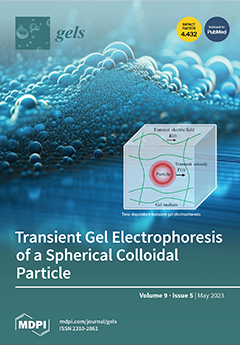Objectives: Impression materials could be a source of cross-contamination due to the presence of microorganisms from blood and saliva inside the oral cavity. Nevertheless, routinely performed post-setting disinfection could compromise the dimensional accuracy and other mechanical properties of alginates. Thus, this study aimed
[...] Read more.
Objectives: Impression materials could be a source of cross-contamination due to the presence of microorganisms from blood and saliva inside the oral cavity. Nevertheless, routinely performed post-setting disinfection could compromise the dimensional accuracy and other mechanical properties of alginates. Thus, this study aimed to evaluate detail reproduction, dimensional accuracy, tear strength, and elastic recovery of new experimentally prepared self-disinfecting dental alginates. Methods: Two antimicrobial-modified dental alginate groups were prepared by mixing alginate powder with 0.2% silver nitrate (AgNO
3 group) and a 0.2% chlorohexidine solution (CHX group) instead of pure water. Moreover, a third modified group was examined by the extraction of
Boswellia sacra (
BS) oleoresin using water. The extract was used to reduce silver nitrate to form silver nanoparticles (AgNPs), and the mixture was used as well in dental alginate preparation (
BS + AgNP group). Dimensional accuracy and detail reproduction were examined as per the ISO 1563 standard guidelines. Specimens were prepared using a metallic mold engraved with three parallel vertical lines 20, 50, and 75 µm wide. Detail reproduction was evaluated by checking the reproducibility of the 50 µm line using a light microscope. Dimensional accuracy was assessed by measuring the change in length between defined reference points. Elastic recovery was measured according to ISO 1563:1990, in which specimens were gradually loaded and then the load was released to allow for recovery from the deformation. Tear strength was evaluated using a material testing machine until failure at a crosshead speed of 500 mm/min. Results: The recorded dimensional changes between all tested groups were insignificantly different and within the reported acceptable values (between 0.037–0.067 mm). For tear strength, there were statistically significant differences between all tested groups. Groups modified with CHX (1.17 ± 0.26 N/mm) and
BS + AgNPs (1.11 ± 0.24 N/mm) showed higher tear strength values compared to the control (0.86 ± 0.23 N/mm) but were insignificant from AgNO
3 (0.94 ± 0.17 N/mm). All tested groups showed elastic recovery values that met both the ISO standard and ADA specifications for elastic impression materials and tear strength values within the acceptable documented ranges. Discussion: The CHX, silver nitrate, and green-synthesized silver nanoparticles could be promising, inexpensive alternatives for the preparation of a self-disinfecting alginate impression material without affecting its performance. Green synthesis of metal nanoparticles could be a very safe, efficient, and nontoxic method, with the advantage of having a synergistic effect between metal ions and active chemical constituents of plant extracts.
Full article






